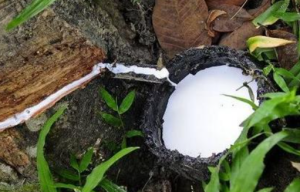The vast world is full of wonders, and there are always things in the process of time, which make human beings astounded; and human scientific knowledge and social civilization progress are created and developed in the constant exploration and answering of various unknown things given by nature. For more than a century, only three crystal-free phases of CaCO3 have been known—calcite, aragonite, and vaterite, and two crystalline phases—calcium carbonate monohydrate (CaCO3 1H2O) and calcium carbonate hexahydrate (CaCO3 6H2O). ). In addition to existing in crystalline form, CaCO3 also exists in a variety of amorphous states with different structures and water contents, known as amorphous calcium carbonate.
On January 25, Zou Chaoyong, an associate researcher at the National Key Laboratory of New Materials and Composite Materials of Wuhan University of Technology, published in Science that they discovered the unexpected discovery of the role of magnesium ions in the crystallization of amorphous calcium carbonate. A new type of hydrous calcium carbonate crystal phase, calcium carbonate hemihydrate (CaCO3·12H2O), ushered in the third “family member” hydrated crystal phase for the calcium carbonate family.

In recent years, thermodynamically unstable amorphous calcium carbonate (ACC) has been found in many organisms, and previous studies have shown that ACC plays an important role in the formation of calcium carbonate biominerals. For example, ACC has been found in the shells of marine mollusks and during the formation of reefs. “Therefore, ACC has been widely studied as an important model in the field of nucleation and growth mechanism of ionic solution crystals. However, the formation mechanism of ACC, its stability, and its role as a precursor in the crystallization transformation process remain unresolved. I don’t know.” Zou Chaoyong introduced to “Science China Daily”. However, when Zou Chaoyong et al. studied the effect of magnesium ions on the formation and crystallization transformation process of ACC, they unexpectedly discovered a new type of hydrous calcium carbonate crystal phase—calcium carbonate hemihydrate. Calcium carbonate hemihydrate is composed of needle-like crystals with a diameter of about 200 nm and a length of about 5 μm. Its infrared, Raman spectra and high-resolution X-ray powder diffraction patterns are different from all known calcium carbonate phases. The most prominent feature is that the Raman peak corresponding to the symmetrical vibration mode of the CO3 group is at 1102 cm-1, which is significantly higher than that of other calcium carbonate phases. Morphology and structural characterization of calcium carbonate hemihydrate. (A) scanning electron micrograph, (B) transmission electron micrograph, (C) infrared spectrum, (D) Raman spectrum, (E) high-resolution X-ray powder diffraction pattern.
Here comes the new calcium carbonate
By systematically studying the formation and transformation process of calcium carbonate hemihydrate, the researchers found that calcium carbonate hemihydrate is formed from ACC containing about 1 water molecule as a precursor, and is formed by dehydration crystallization under specific magnesium ion concentration conditions. . The researchers used an automatic potentiometric titrator to monitor the chemical changes in the solution in real time, observe the ion concentration and pH value, and capture the intermediate state of the reaction, and found that the formation conditions of calcium carbonate hemihydrate have certain particularities. At room temperature, when ACC is used as a reaction precursor, the molar ratio of magnesium ions to calcium ions in the solution should reach 4~6, and the pH value is about 11. Zou Chaoyong said that under such conditions, hemihydrate calcium carbonate can be formed. “Interestingly, in the reaction conditions, the Mg2+/Ca2+ molar ratio is similar to the current Mg2+/Ca2+ molar ratio in seawater (about 5.2 in seawater). This means that calcium carbonate hemihydrate is likely to exist in nature.” Zou Chaoyong Say. However, calcium carbonate hemihydrate is in a metastable state, and its stable existence depends on external environmental conditions. In an aqueous solution, calcium carbonate hemihydrate will re-absorb water and transform into calcium carbonate monohydrate crystals containing 1 water molecule; in a humid environment, calcium carbonate hemihydrate can be converted within two or three days; in a dry environment, calcium carbonate hemihydrate can be Stable existence for more than half a year. In this regard, Tang Ruikang, a professor at the Department of Chemistry of Zhejiang University, said in an interview with “China Science Journal” that, as the article pointed out, the specific conditions for the formation of calcium carbonate hemihydrate are very close to the environmental conditions of biological nature. Therefore, the discovery of calcium carbonate hemihydrate may Help to reveal the evolution of calcium carbonate in nature. “In addition, this also suggests that we need to re-examine the rationality of the laboratory model.” Tang Ruikang said.
Broaden the new horizon of calcium carbonate
As the researchers say, although calcium carbonate hemihydrate is currently only found in the laboratory, due to its mild synthetic conditions, this crystal is also likely to exist in nature or in some industrial production processes. “Thus, this study not only broadens our knowledge of the calcium carbonate family, but also demonstrates the important role of unstable amorphous precursors in the formation of new materials, which has implications for biomineralization, geology and industrial production. All are of great significance.” Zou Chaoyong told reporters. In this regard, Tang Ruikang believes that this new calcium carbonate crystal phase is an intermediate process of calcium carbonate phase transformation. The discovery of this intermediate state is helpful for further understanding the structural evolution process of ACC in biomineralization, and is conducive to better control of material evolution in the research process.
